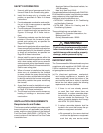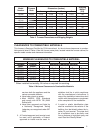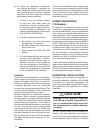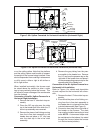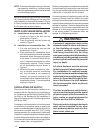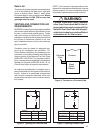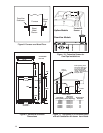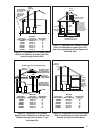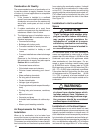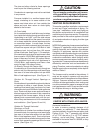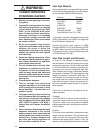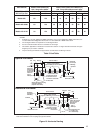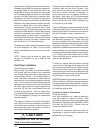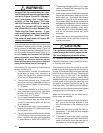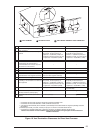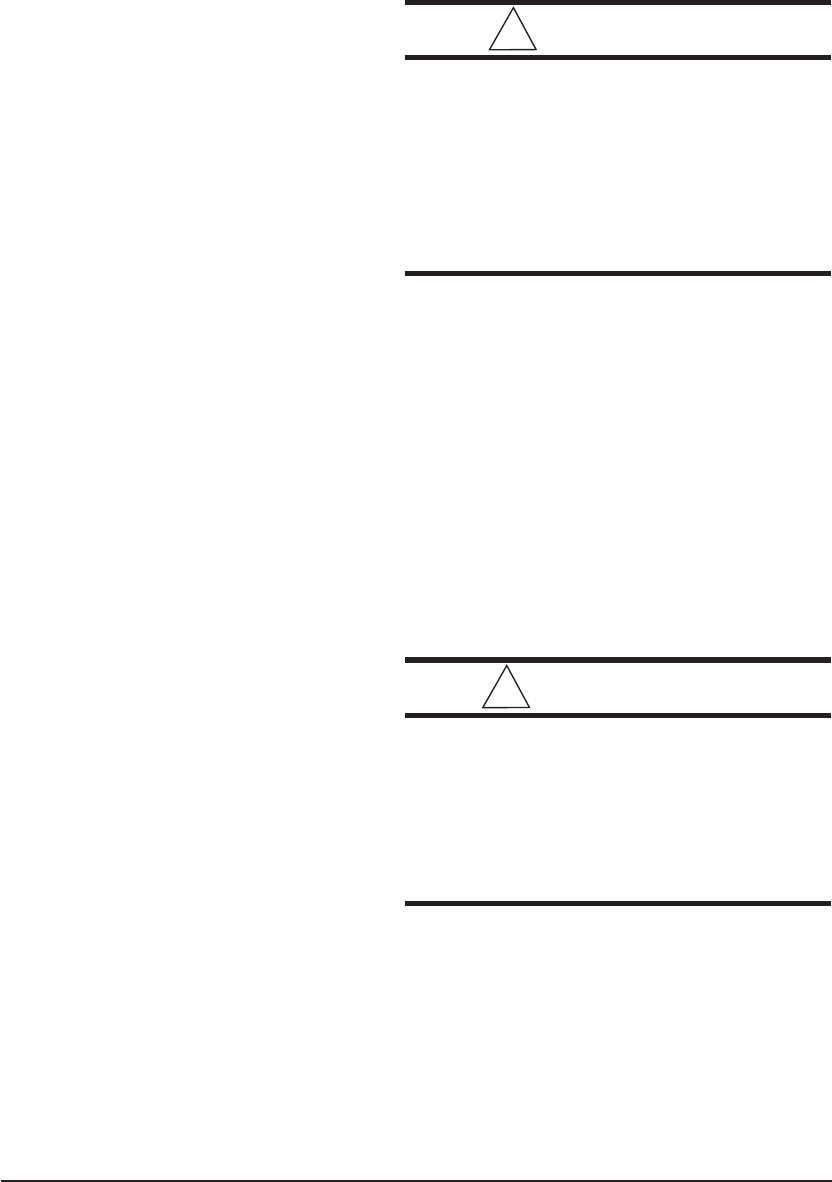
16
Combustion Air Quality
The recommended source of combustion air is
to use the outdoor air supply. However, the use
of indoor air in most applications is acceptable
except as follows:
1. If the furnace is installed in a confi ned
space it is recommended that the necessary
combustion air come from the outdoors by
way of attic, crawl space, air duct, or direct
opening.
2. If outdoor combustion air is used, there
must be no exposure to the installations or
substances listed in Item 3 below.
3. The following types of installation may re-
quire Outdoor Air for combustion, due to
chemical exposures:
• Commercial buildings
• Buildings with indoor pools
• Furnaces installed in laundry rooms
• Furnaces installed in hobby or craft
rooms
• Furnaces installed near chemical storage
areas
Exposure to the following substances in
the combustion air supply may also require
Outdoor Air for combustion:
• Permanent wave solutions
• Chlorinated waxes and cleaners
• Chlorine based swimming pool chemi-
cals
• Water softening chemicals
• De-icing salts or chemicals
• Carbon tetrachloride
• Halogen type refrigerants
• Cleaning solvents (such as perchloroethy-
lene)
• Printing inks, paint removers, varnishes,
etc.
• Hydrochloric acid
• Cements and glues
• Antistatic fabric softeners for clothes dry-
ers
• Masonry acid washing materials
Air Requirements For One-Pipe
Installation
When air for combustion is to be taken from
around the furnace, a protective screen must be
installed over the combustion air intake opening.
This screen is provided with the furnace installa-
tion instructions and functions to prevent debris
from entering the combustion system. It should
be installed on the combustion air intake collar
or inlet PVC. If furnace location is such that this
opening might be unintentionally obstructed, a 3”
PVC elbow must be installed on the collar, and
the screen placed inside the inlet of the elbow.
See Figure 10.
Installation In An Unconfi ned
Space
!
CAUTION:
“Tight” buildings (with weather strip-
ping and caulk to reduce infi ltration),
may require special provisions for
introduction of outside air to ensure
satisfactory combustion and venting,
even though the furnace is located in
an unconfi ned space.
An unconfi ned space is an area including all
rooms not separated by doors with a volume
greater than 50 cubic feet per 1,000 Btuh of the
combined input rates of all appliances which
draw combustion air from that space. For ex-
ample, a space including a water heater rated
at 45,000 Btuh and a furnace rated at 75,000
Btuh requires a volume of 6,000 cubic feet [50 x
(45 + 75) = 6,000] to be considered unconfi ned.
If the space has an 8 foot ceiling, the fl oor area
of the space must be 750 square feet (6,000
/ 8 = 750). In general, a furnace installed in an
unconfi ned space will not require outside air for
combustion.
!
WARNING:
Furnaces installed with combustion
air drawn from a heated space which
includes exhaust fans, fi replaces, or
other devices that may produce a nega-
tive pressure should be considered
confi ned space installations.
Installation In A Confi ned Space
A confi ned space is one which does not meet
the unconfi ned space volume requirements, and
typically involves installation in a small room. All
such installations must have specifi c provisions
for introduction of combustion and ventilation air.
Codes require that two openings be provided for
this - one with bottom edge within 12” of the fl oor
and one with top edge within 12” of the ceiling.



